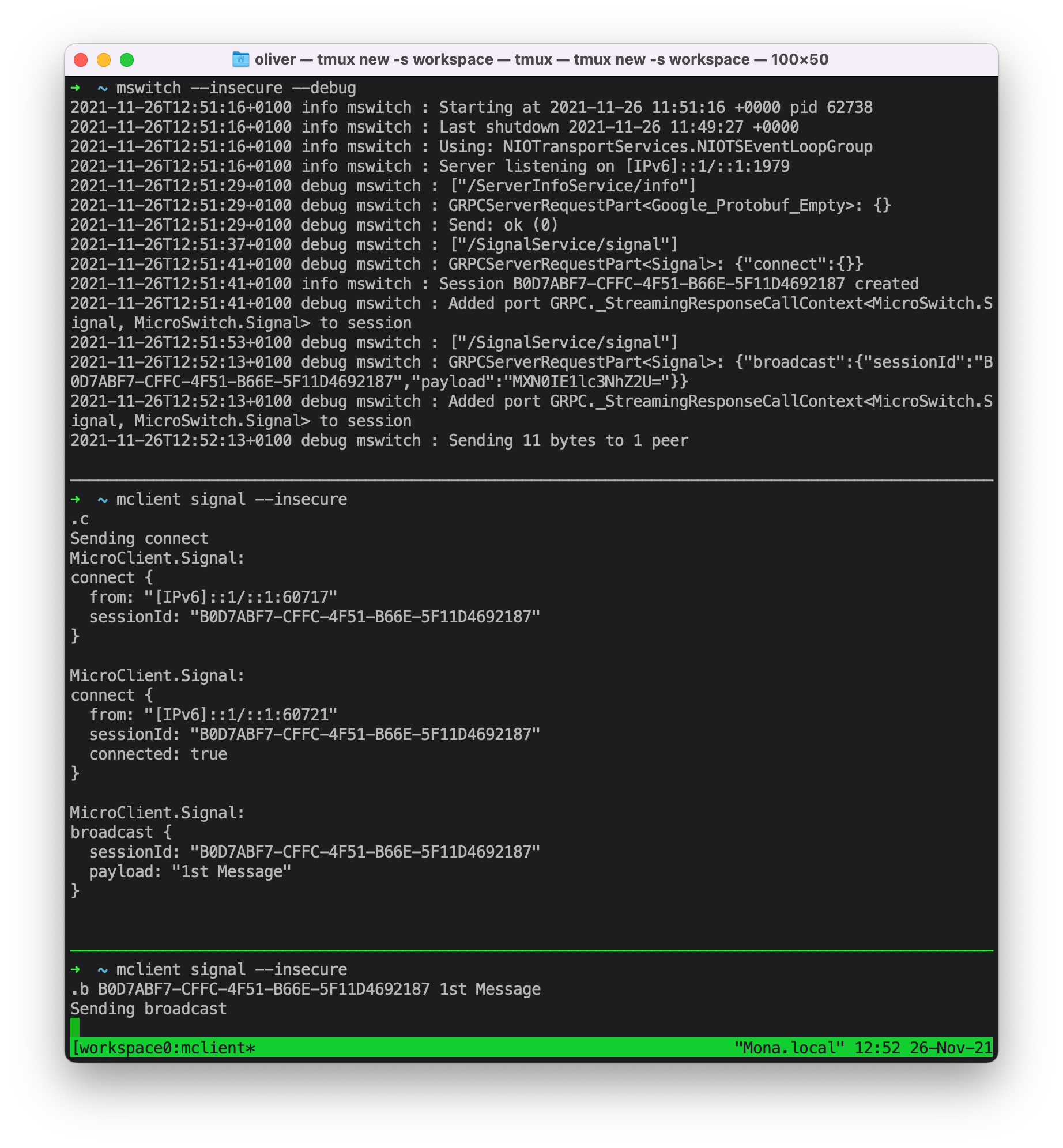It's a well behaved gRPC server that has support for TLS and runs on macOS and Linux.
It supports broadcasting arbitrary messages to peers that are connected to a virtual switch, hence the name. Peers can be invited via Apple Push notifcation services. I initially started it as a building block for a WebRTC signaling server. You can easily use it to setup a simple chat service (no message history, though).
- Generate the model files
sh ./generate.sh- start the server without SSL enabled
swift run mswitch --insecureYou should have a server running on ::1:1979, now. You can change ip and port via --host and --port
- Check the server uptime
swift run mclient --insecureopenssl genrsa -out <your.server>.key 2048
openssl req -new -key <your_srver>.key -out <your.server>.csr
openssl req -x509 -days 10 -key <your.server>.key -in <your.server>.csr -out <your.server>.pemHint: hostname | tr "[:upper:]" "[:lower:]" might be a good choice for <your.server>.
You can either delete the certificate signing request or reuse it after 10 days.
This is needed if you want to run a server on macOS
openssl pkcs12 -export -out <your.server>.pfx -inkey <your.server>.key -in <your.server>.pem- Open keychain and create a new keychain. Keychain will install new certificates in the last keychain that was opened.
- Double click the pfx file to install into your new keychain. You should now have a cert and a key installed.
- start the server with SSL enabled on macOS
swift run mswitch -h <your.server>The server name is important because that's whats going to be looked up in the keychain.
- check that SSL is enabled
openssl s_client -connect <your.server>:<port>To be able to run the client you need to allow the self-signed x509 certificate. So got to keychain and enable trust.
- check the uptime with SSL enabled
swift run mclient server-info -h <your.server>Since Linux cannot load the identity from the keychain you need to install the certificate and keyfile into the config dir and create links (cert.pem and key.pem) pointing to your files.
mkdir -p .mswitch/etc
cp <your.server>.pem .mswitch/etc/
cp <your.server>.key .mswitch/etc/
pushd .mswitch/etc
ln -sf <your.server>.pem cert.pem
ln -sf <your.server>.key cert.key
popdYou can force the server to use POSIX mode via --forcePosix
swift run mswitch -h <your.server> --forcePosixImportant: In Linux POSIX mode is the default.
- add APNS Config
mv APNConfig_default.json.example .mswitch/etc/APNConfig_default.json- add a push token for a handle with
swift run mclient token --action add <token> <handle>- you can send an invite via
swift run mclient invite --session <uuid> <from>